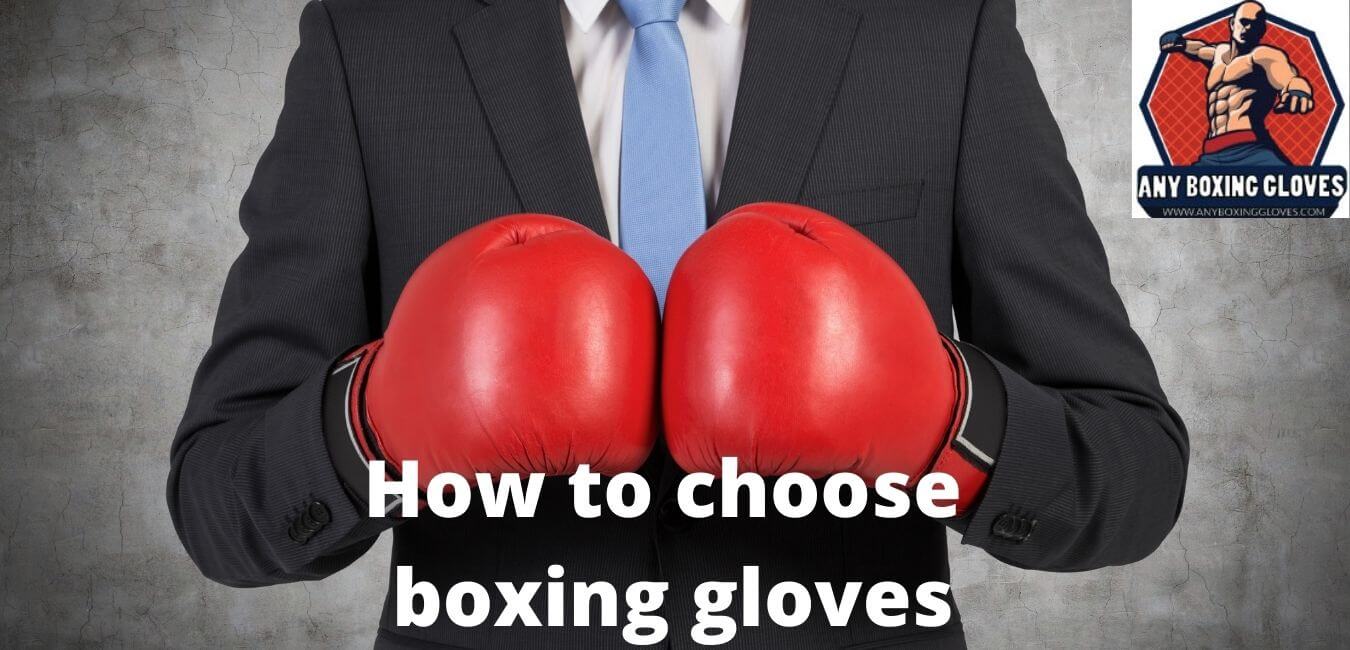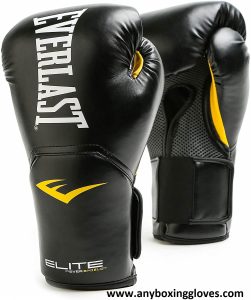In this guide, you will learn how to choose boxing gloves and decide which boxing glove style is good for you. You’ll be closer to bringing a heavyweight swing into your boxing routine. So go the distance with professional boxing equipment and pick the appropriate gloves with these vital tips.

Contents
How to choose boxing gloves?
Do you have no idea as to how to choose the boxing gloves for yourself? We understand that packing a punch in the gym starts with placing the right gear in your pocket. For boxers, wearing quality gloves will help keep your hands secure and safe during training. Much like other protective clothing, boxing gloves work better when they’re sized. There are also various types of boxing gloves. Choosing from general specialists to those trained for fight night.
Measurements need to choose boxing gloves
When boxing gloves are snug on the side, they are at their best. Glove sizes have shown in ounces to help fighters better distinguish the gloves they should practice or fight with.
Glove Sizing
This can be as light as 6 Oz youth mitts or as heavy as 20 Oz heavyweight gloves. You’ll need three components to figure out which size is right for you: your height, weight, and the diameter of your dominant hand.

Although measuring your height and weight with a scale and measuring tape is straightforward, measuring your hand diameter is a little more challenging.
Using a cloth tape measure to measure around your open dominant hand somewhere below the knuckles to get an accurate reading. To get a precise quantity, your tape may appear in the center of your palm.
If you don’t have a denim tape measure, you can contain your hand a piece of twist wrapped for measuring around your hand. Use a ruler or a rigid tape measure to measure the marked line.

When it comes to evaluating for that perfect match, hand diameter rather than the stand-over height is best described as a guideline and would be a better measure of scale.
A fair contrast would be the fit of a tailored suit versus a store-bought t-shirt. Both will match, but the case will have tailored to your exact measurements, while the t-shirt will be more generic.
After you’ve gathered these three pieces of information, the next step is to figure out what kind of gloves you’ll need.
Types of boxing gloves
Despite their similar appearance, boxing gloves have been customized to perform specific tasks. There are three different types of boxing gloves for competition and two different kinds of competitive mitts. Each design has a distinct quality that has suited to its intended application.
Bag Gloves
As the name indicates, Bag gloves have intended for use in the heavy bag, pace bag, or pad preparation. Bag gloves have less support in the knuckles than most types of boxing gloves. While having a product with less padding can seem counterintuitive.
Bag gloves have been invented to enable fighters to feel their punches in becoming used to the effect. If a fighter’s shape has broken or an awkward punch has been thrown, they should be able to feel it in their bag glove and react.
Training gloves
If you are just training for boxing and new to this rough sport, then we would suggest that training gloves are a perfect all-around choice. These gloves are well-padded and can use for both bag work and sparring.
They aren’t designed for either. Training gloves can be an excellent first glove, providing enough support for both beginner and experienced fighters.
Sparring gloves
Sparring gloves, unlike training gloves, have been designed for sparring and have extra padding to preserve both you and your sparring partner. It may be the same size as trainers and could be a little thicker due to the more padding.
It may be the same size as trainers and could be a little thicker due to the more padding.
Things to Consider to Choosing the Best Boxing Gloves
Following are the essential things that you should consider before choosing the best one.
Gloves Weight and Size
The most common options are 12oz, 14oz, and 16oz when it comes to glove weight. There are smaller and larger gloves outside of this set, but specific three are the most popular in gyms worldwide. The quantity of padding inside determines the size and weight of the bag.
More padding provides more hand safety, but it also adds weight to the glove, slowing your punching speed. You’ll also notice that your back gets fatigued more.
Glove Material
When choosing the right boxing gloves, the material that made up your gloves really matters.
Vinyl
Vinyl and leather are the most popular fabrics for boxing gloves (both Polyurethane and genuine leather). when you compare both of the materials in terms of cost, Vinyl boxing gloves are the most affordable, with prices varying from $20 to $40. As a result, beginners often choose Vinyl boxing gloves.
Vinyl gloves are subordinate to leather gloves’ satisfaction and longevity if you exercise. Vinyl is notorious for still the test of time and more for being very hot and sticky on the inside.
These are perfect if you need a pair of gloves to take part in exercise classes and don’t want to hit anything; otherwise. I look investing in a couple of leather gloves.
Polyurethane leather
As before mentioned, six forms of leather have been used: polyurethane and genuine leather. Polyurethane is synthetic leather that resembles natural leather. It has designed to last much longer than vinyl gloves
Genuine leather
It is the most expensive, starting at about $60 and going up to $400. They are also the best quality; with genuine leather, you can rest assured that your gloves will last. Leather gloves can also mold to your hand shape over time and become more comfortable to wear.
Gloves price
Boxing gloves are available at various prices, ranging from under $20 to $400. Cleto, Grant, and Winning are some of the more expensive pure boxing glove brands, ranging from $125 to $400.
The sweet spot for quality and cost is about $70-$80. You can get fancier gloves for more money, but the performance is generally identical.
To put it another way, you won’t be having something that gives much more. The exception is pro-style gloves such as Winning, Cleto, and Grant, which provide superior design, padding, and comfort at a premium price
Frequently Asked Questions
Q1. What’s the difference between 10oz and 12oz boxing gloves?
10-ounce competition boxing gloves are just a bit lighter than 12-ounce boxing gloves, which makes it easier for fighters to move faster. They also offer more maneuverability and dexterity. For me, the 10-ounce gloves feel like an extension of my body (and the curvature or shape of your hand doesn’t show or matter).
Q2. Is it better to train with heavier gloves?
Yes, when possible, you should always train with heavier gloves during your training. This is because it improves your hand speed and strengthens your wrists.
Q3. Do beginners need boxing gloves?
No, beginners don’t need boxing gloves. In fact, I would even recommend starting out without them. When you’re starting out, you want to focus on your form and how to throw a punch correctly. Boxing gloves will only get in the way of that.
How much should a beginner spend on boxing gloves?
A beginner should spend around $25-50 on boxing gloves. This is because it is hard to find one pair of boxing gloves that are suitable for beginning boxers.
Q4. What size gloves should I get?
Depending on how heavy your punch is, you may want to go with 10 ounces. When sparring or fighting, I would recommend 11-14 ounces for hand speed and ease in striking an opponent. For power punching class exercises where you are repeatedly throwing rounds of jabs or hooks without rest, 16 ounces might be a better choice so that the gloves are more heavily weighted at the end of each round.
Otherwise, consider 12 ounces for fighting because they are heavier but strong enough to be useable in most situations. 16-ounce boxing gloves have the advantage of being very durable with extreme padding considering their weight which makes them great for heavy sparring or using with heavier bags especially if you’re training indoors when it’s colder.
Q5. How heavy should my boxing gloves be?
Your boxing gloves should weigh between eight to sixteen ounces.
The weight of the glove depends on your ability level, fighting style, and how quickly you wear out hand wraps. There are some heavy-duty MMA fighters who swear by their 14-ounce gloves while there are some light-wristed boxers who would never use more than 8 ounces of the glove. The general rule is that heavier (heavier) gloves allow a person to strike harder without having to worry about wearing down their hands as much whilst lighter (lighter) gloves require greater dexterity and footwork but can give you a better chance at winning a fight with faster opponents due to increased control over the fight.
Leave a Reply